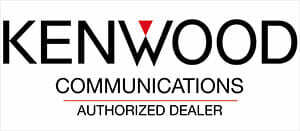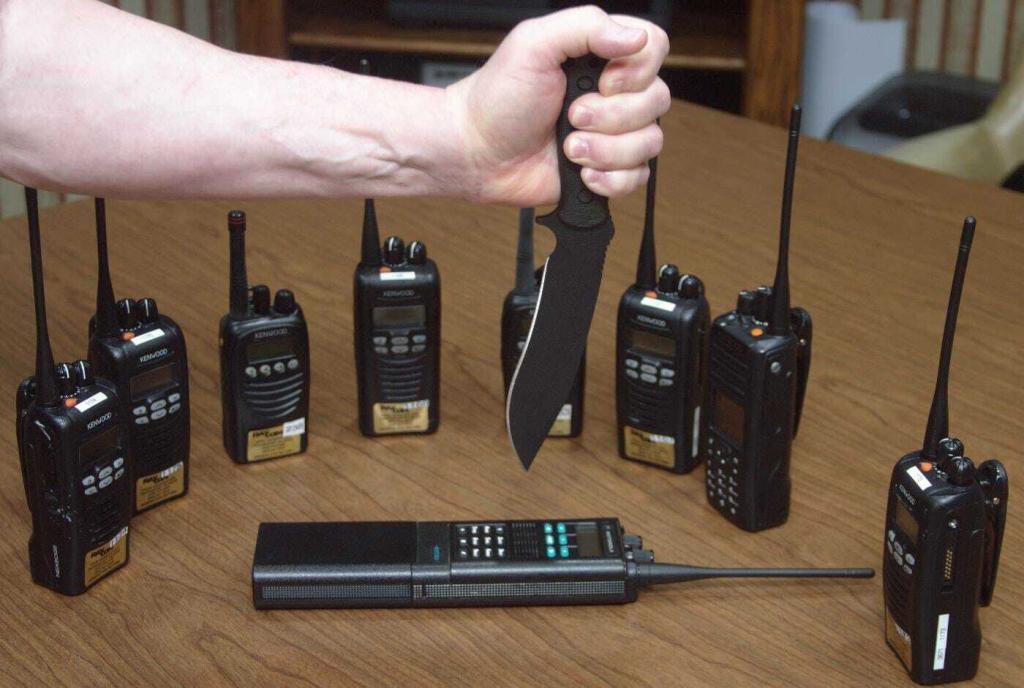The History of Raycom and How We Became a Kenwood Networked System Operator
By: Mark Abrams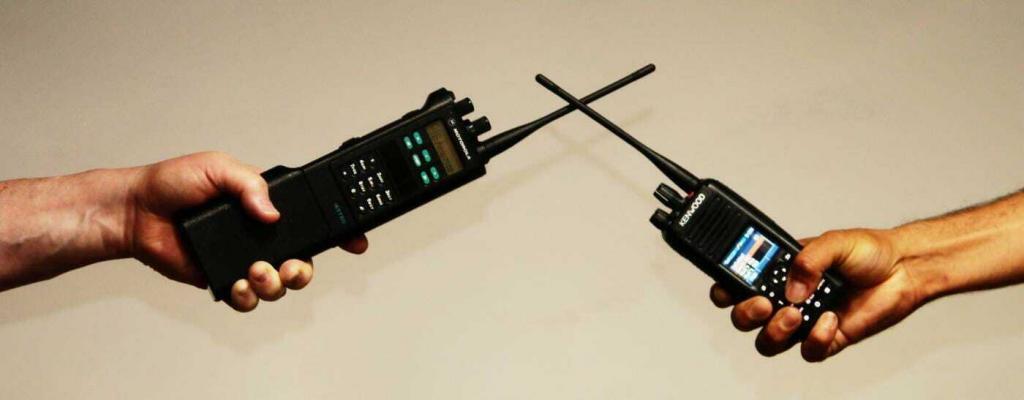 Modeling courtesy of two acquaintances of Thing.
Modeling courtesy of two acquaintances of Thing.
Over the years, Mobile Relay Associates dba Raycom (MRA or Raycom) has been a loyal dealer to several manufacturers of two-way radio. We had good reasons for each manufacturer we chose and have stuck by each manufacturer through thick and thin, sometimes to our own detriment.
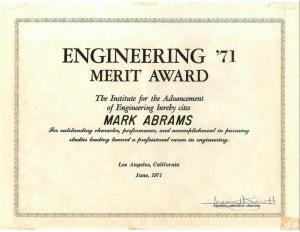 I started with electronics at the age of 5 building a burglar alarm for our “clubhouse” that was built on the side of the house. In junior high (middle school), I took electric shop and got the highest grades on projects ever given by the shop teacher. In high school, I took electronics every semester and earned several awards including the Engineering Merit Award for participation in the science fair, Industrial Arts Student Award, a senior award from Alexander Hamilton High School and obtained my amateur radio license. My shop teacher was the trustee of the amateur radio club at the school and he required everyone in his classes to study Morse Code for the first 5 minutes of every class. This allowed me to learn the code which was required by the FCC (along with a comprehensive written test) to obtain an amateur radio license. I passed the
I started with electronics at the age of 5 building a burglar alarm for our “clubhouse” that was built on the side of the house. In junior high (middle school), I took electric shop and got the highest grades on projects ever given by the shop teacher. In high school, I took electronics every semester and earned several awards including the Engineering Merit Award for participation in the science fair, Industrial Arts Student Award, a senior award from Alexander Hamilton High School and obtained my amateur radio license. My shop teacher was the trustee of the amateur radio club at the school and he required everyone in his classes to study Morse Code for the first 5 minutes of every class. This allowed me to learn the code which was required by the FCC (along with a comprehensive written test) to obtain an amateur radio license. I passed the 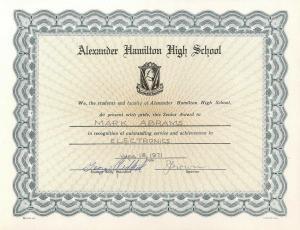 novice test which gave me the lowest level license available. A few months later, I passed my General and Advanced class amateur radio license tests and have remained an Advanced class ever since that time. Once I passed my test and obtained the license, I started experimenting with radio at age 15 and learned a lot about radio and electronics in general through my electronics classes and experimenting with radio through amateur radio.
novice test which gave me the lowest level license available. A few months later, I passed my General and Advanced class amateur radio license tests and have remained an Advanced class ever since that time. Once I passed my test and obtained the license, I started experimenting with radio at age 15 and learned a lot about radio and electronics in general through my electronics classes and experimenting with radio through amateur radio. 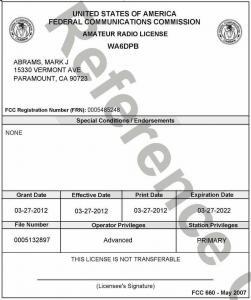 I built a remote controlled amateur radio station with over 50 remote functions during my time in high school and had it on the air soon after I graduated high school.
I built a remote controlled amateur radio station with over 50 remote functions during my time in high school and had it on the air soon after I graduated high school.
Before there was a Raycom, I worked for two different radio shops. One was Executive Communications which sold EF Johnson radios, Standard radios and Aerotron radios. It was necessary to have a Radiotelephone license to work on commercial radios and certify their operation. 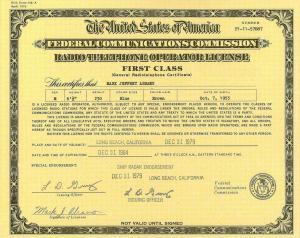 I studied for the test and took it as soon as I could go over to the FCC office to take the test. I passed the test to obtain my Second Radiotelephone License Jan 18, 1972 and obtained my First Radiotelephone License With Radar Endorsement on Jan 2, 1975. We serviced radios made by anyone including Motorola, General Electric (GE – which is now under the name Harris), RCA and many models of car telephones that were made before cellular phones were conceived including briefcase telephones which were commonly used in those days by attorneys and doctors. The other company was Radio Communications Service, a GE service station (MR) where we sold GE radios and EF Johnson radios. I was the expert on EF Johnson radios and spent much of my time setting up new radio systems for new sales. I learned the servicing of Motorola radios many years earlier while converting used Motorola radios for use by amateur radio operators.
I studied for the test and took it as soon as I could go over to the FCC office to take the test. I passed the test to obtain my Second Radiotelephone License Jan 18, 1972 and obtained my First Radiotelephone License With Radar Endorsement on Jan 2, 1975. We serviced radios made by anyone including Motorola, General Electric (GE – which is now under the name Harris), RCA and many models of car telephones that were made before cellular phones were conceived including briefcase telephones which were commonly used in those days by attorneys and doctors. The other company was Radio Communications Service, a GE service station (MR) where we sold GE radios and EF Johnson radios. I was the expert on EF Johnson radios and spent much of my time setting up new radio systems for new sales. I learned the servicing of Motorola radios many years earlier while converting used Motorola radios for use by amateur radio operators.
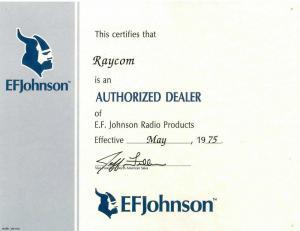 Starting back in 1975, Raycom started in the radio business servicing radios of all makes and models which included my specialty of EF Johnson radios and Motorola equipment. Eventually, MRA started selling radios by becoming a dealer for Kokusai Electric which sold radios under the trade name Redicom. The radios had been imported for many years by Cook Communications in Fresno and sold under their private label. When Kokusai decided to sell under the name Redicom, they were looking for dealers and Raycom was looking for a product line to sell. Kokusai products were good quality, better than many of the radios that were being sold in the market at the time. In those days, all two-way radios seemed to have their problems which varied from one model to another. There were many radios manufactured in Japan that were of questionable quality and reliability such as Standard Radio, Yaesu Munsen, Trio and Icom. Several US manufacturers including Motorola, General Electric, RCA, Kaar and Aerotron made radios of varying quality and performance. Additionally, there was a radio made in Canada from Canadian Marconi Corporation (CMC), and a line of radios from the United Kingdom. Cellular was just a dream and the two-way radio business was robust. Radios cost between $500 – $5000 depending upon the model and the manufacturer.
Starting back in 1975, Raycom started in the radio business servicing radios of all makes and models which included my specialty of EF Johnson radios and Motorola equipment. Eventually, MRA started selling radios by becoming a dealer for Kokusai Electric which sold radios under the trade name Redicom. The radios had been imported for many years by Cook Communications in Fresno and sold under their private label. When Kokusai decided to sell under the name Redicom, they were looking for dealers and Raycom was looking for a product line to sell. Kokusai products were good quality, better than many of the radios that were being sold in the market at the time. In those days, all two-way radios seemed to have their problems which varied from one model to another. There were many radios manufactured in Japan that were of questionable quality and reliability such as Standard Radio, Yaesu Munsen, Trio and Icom. Several US manufacturers including Motorola, General Electric, RCA, Kaar and Aerotron made radios of varying quality and performance. Additionally, there was a radio made in Canada from Canadian Marconi Corporation (CMC), and a line of radios from the United Kingdom. Cellular was just a dream and the two-way radio business was robust. Radios cost between $500 – $5000 depending upon the model and the manufacturer. 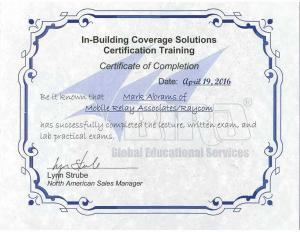 All the import radio manufacturers sold through dealers while Motorola, GE and RCA had factory direct salesmen that dominated the landscape. GE had some dealers called MRs which stood for Manufacturers Representative and some factory stores. RCA was in a similar position. Motorola had their MSS stations, but they were not allowed to sell radios and compete with the Motorola factory direct salesmen. Therefore, being a Motorola dealer was not an option back in those days. Since there was a significant presence of Motorola MSS service stations, there was no interest on the part of Motorola to make us an MSS.
All the import radio manufacturers sold through dealers while Motorola, GE and RCA had factory direct salesmen that dominated the landscape. GE had some dealers called MRs which stood for Manufacturers Representative and some factory stores. RCA was in a similar position. Motorola had their MSS stations, but they were not allowed to sell radios and compete with the Motorola factory direct salesmen. Therefore, being a Motorola dealer was not an option back in those days. Since there was a significant presence of Motorola MSS service stations, there was no interest on the part of Motorola to make us an MSS.
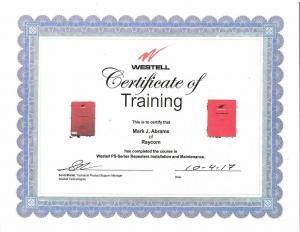 Raycom also became a dealer for Aerotron, a US manufacturer who was producing two lines of radios which were both a higher tier radio than the Redicom that had many options not available in the Redicom line. Their radios were considerably more expensive, thus making them more difficult to sell to the average radio user, but the more sophisticated user needed the features offered in these radio packages. Unfortunately, the Aerotron model radios tended to have more maintenance problems than the Redicom radios which were the mainstay of Raycom sales.
Raycom also became a dealer for Aerotron, a US manufacturer who was producing two lines of radios which were both a higher tier radio than the Redicom that had many options not available in the Redicom line. Their radios were considerably more expensive, thus making them more difficult to sell to the average radio user, but the more sophisticated user needed the features offered in these radio packages. Unfortunately, the Aerotron model radios tended to have more maintenance problems than the Redicom radios which were the mainstay of Raycom sales.
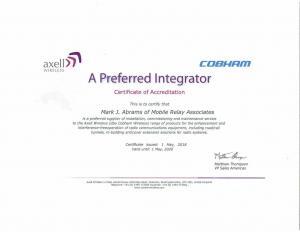 Eventually, the sales manager from Redicom left the company and moved to EF Johnson Co to become their district manager. He appointed Raycom to be an EF Johnson dealer since we were very familiar with the line from a service standpoint and with our good reputation with Redicom, we were now able to sell the Johnson product line. We stopped selling Aerotron and our sales of Redicom radios started to dwindle as we concentrated on selling EF Johnson radios. Johnson developed the 3rd trunking system to be type accepted by the FCC in late 1980 behind Motorola and GE. All trunked radio systems were operated in the 800MHz band and one needed to have a trunked SMR license to own and operate the system. Motorola developed their privacy plus trunked radio system and started delivery in 1979. GE developed their Mark V trunked radio system and started delivery a few months later. The Johnson LTR trunked radio system proved to be the best entry into the market and out-performed both the Motorola and the GE systems. However, Motorola with their huge “marketing machine” was able to sell more trunked radios than anyone else. Motorola sold approximately two-thirds of all two way radios in the United States and sold about two-thirds of the trunked radios. Their system had massive problems when it was first introduced, but over time, the “bugs” were worked out and the system performed well. The GE Mark V system was a reintroduction of some old technology that had some serious flaws in the design. Although they got off with a running start and initially led the pack, they quickly fell behind due to the limitations of the system design. Raycom had followed the route of the independent dealer and operated Johnson LTR trunked radio systems. We sold Johnson LTR trunked radios and competed heavily against Motorola. We took a lot of sales away from the factory Motorola salesmen who became angry that we were able to compete so well against them. These people eventually moved up into Motorola management and continued their hatred of Raycom for their loss of sales to Raycom, thus making it very difficult to become a Motorola dealer.
Eventually, the sales manager from Redicom left the company and moved to EF Johnson Co to become their district manager. He appointed Raycom to be an EF Johnson dealer since we were very familiar with the line from a service standpoint and with our good reputation with Redicom, we were now able to sell the Johnson product line. We stopped selling Aerotron and our sales of Redicom radios started to dwindle as we concentrated on selling EF Johnson radios. Johnson developed the 3rd trunking system to be type accepted by the FCC in late 1980 behind Motorola and GE. All trunked radio systems were operated in the 800MHz band and one needed to have a trunked SMR license to own and operate the system. Motorola developed their privacy plus trunked radio system and started delivery in 1979. GE developed their Mark V trunked radio system and started delivery a few months later. The Johnson LTR trunked radio system proved to be the best entry into the market and out-performed both the Motorola and the GE systems. However, Motorola with their huge “marketing machine” was able to sell more trunked radios than anyone else. Motorola sold approximately two-thirds of all two way radios in the United States and sold about two-thirds of the trunked radios. Their system had massive problems when it was first introduced, but over time, the “bugs” were worked out and the system performed well. The GE Mark V system was a reintroduction of some old technology that had some serious flaws in the design. Although they got off with a running start and initially led the pack, they quickly fell behind due to the limitations of the system design. Raycom had followed the route of the independent dealer and operated Johnson LTR trunked radio systems. We sold Johnson LTR trunked radios and competed heavily against Motorola. We took a lot of sales away from the factory Motorola salesmen who became angry that we were able to compete so well against them. These people eventually moved up into Motorola management and continued their hatred of Raycom for their loss of sales to Raycom, thus making it very difficult to become a Motorola dealer.
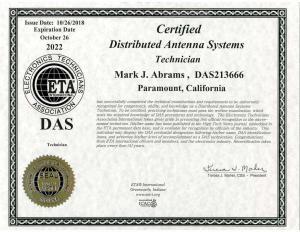 We were very happy being a Johnson dealer and selling their LTR products. However, Johnson was sold in 1984 to Western Union for $140M who wanted Johnson to be in the cellular phone business. Motorola and Johnson jointly developed cellular under a contract with AT&T and both companies made cellular phones while Johnson almost completely stopped any development of new products for the LTR trunked radio. Eventually, Johnson was sold again to Transcrypt International for $70M who ran the company into the ground and sold it to a pair of investors for $40M. They took apart the company by selling different divisions of Johnson to different entities and made a considerable profit while destroying what was left of the company. Johnson became EF Johnson Technologies and concentrated on the manufacture of P25 radio products which Raycom rarely sells because it is a public safety product and Raycom deals primarily with commercial entities and usually does not compete in the public safety market. Therefore, it was time for Raycom to find another product line to represent.
We were very happy being a Johnson dealer and selling their LTR products. However, Johnson was sold in 1984 to Western Union for $140M who wanted Johnson to be in the cellular phone business. Motorola and Johnson jointly developed cellular under a contract with AT&T and both companies made cellular phones while Johnson almost completely stopped any development of new products for the LTR trunked radio. Eventually, Johnson was sold again to Transcrypt International for $70M who ran the company into the ground and sold it to a pair of investors for $40M. They took apart the company by selling different divisions of Johnson to different entities and made a considerable profit while destroying what was left of the company. Johnson became EF Johnson Technologies and concentrated on the manufacture of P25 radio products which Raycom rarely sells because it is a public safety product and Raycom deals primarily with commercial entities and usually does not compete in the public safety market. Therefore, it was time for Raycom to find another product line to represent.
During the time that MRA operated our 800MHz trunked LTR radio systems, we strived to be the best. We used innovative solutions to keep the systems running while our competitors who operated similar systems would have consistent failures. We designed and manufactured fan kits to cool the high power amplifiers which were the major source of failure to increase reliability, we installed remote power monitoring systems to provide diagnostic information to determine an issue that needed attention before a service outage occurred and we designed & installed a hot standby system that allowed us to remotely replace a failed channel in the system. These actions resulted in far fewer failures and far more rapid solutions to get our customers back on the air far more quickly than our competition.
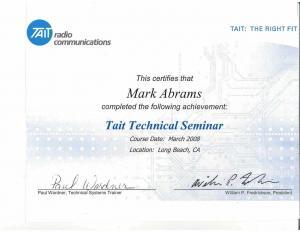 In the late 1990s, Nextel was buying out most of the 800MHz radio systems around the country and converting the customers to their digital network. Raycom was one of the last to sell our 800MHz trunked SMR radio systems to Nextel which resulted in the loss of 90% of our business. However, it was the right thing to do at the time due to age and health situation of others who were part of Raycom ownership. After the sale, we had to “start over” in the radio business as we started operating LTR radio systems in the UHF band. Motorola had licensed their P25 technology to Johnson Technologies and Johnson had licensed their LTR technology to Motorola. Since Motorola was now making LTR radios and most of the exclusive radio spectrum in the Los Angeles (LA) area of Southern California belonged to former Johnson dealers who had constructed UHF trunked LTR systems, Motorola needed Raycom and others to be able to load the Motorola LTR radios on our systems. Raycom became a Motorola dealer primarily to support the other Motorola dealers who wanted to sell the Motorola LTR product. However, Motorola was very structured in the way they did business, required regular call reports on our sales efforts including the names of the companies we contacted. We did not fit into the Motorola mold and resisted providing them the reports that they continued to demand. After a couple of years, Motorola canceled Raycom’s dealership because we did not obey them and we did not sell a sufficient quantity of Motorola product. Therefore, we went our separate ways.
In the late 1990s, Nextel was buying out most of the 800MHz radio systems around the country and converting the customers to their digital network. Raycom was one of the last to sell our 800MHz trunked SMR radio systems to Nextel which resulted in the loss of 90% of our business. However, it was the right thing to do at the time due to age and health situation of others who were part of Raycom ownership. After the sale, we had to “start over” in the radio business as we started operating LTR radio systems in the UHF band. Motorola had licensed their P25 technology to Johnson Technologies and Johnson had licensed their LTR technology to Motorola. Since Motorola was now making LTR radios and most of the exclusive radio spectrum in the Los Angeles (LA) area of Southern California belonged to former Johnson dealers who had constructed UHF trunked LTR systems, Motorola needed Raycom and others to be able to load the Motorola LTR radios on our systems. Raycom became a Motorola dealer primarily to support the other Motorola dealers who wanted to sell the Motorola LTR product. However, Motorola was very structured in the way they did business, required regular call reports on our sales efforts including the names of the companies we contacted. We did not fit into the Motorola mold and resisted providing them the reports that they continued to demand. After a couple of years, Motorola canceled Raycom’s dealership because we did not obey them and we did not sell a sufficient quantity of Motorola product. Therefore, we went our separate ways.
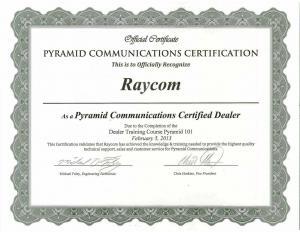 Motorola has been in a managed decline for many years. Ever since Motorola disbanded the majority of their direct sales department and started selling through dealers, they have been selling off divisions of the company to survive as the company continues to shrink. Motorola was previously a $70 billion dollar company, but has sold off their Quasar TV division, their computer routers & switches, their microwave radio division, sold all their community repeaters, sold their SMR systems to Nextel, sold all their nationwide array of radio tower sites, closed down their SMR management division, sold off their semiconductor manufacturing division and finally have managed to reduce the firm from a $70 billion company to a 1.7 billion dollar company. The old company Motorola no longer exists per se as the new company Motorola Solutions is the successor of Motorola.
Motorola has been in a managed decline for many years. Ever since Motorola disbanded the majority of their direct sales department and started selling through dealers, they have been selling off divisions of the company to survive as the company continues to shrink. Motorola was previously a $70 billion dollar company, but has sold off their Quasar TV division, their computer routers & switches, their microwave radio division, sold all their community repeaters, sold their SMR systems to Nextel, sold all their nationwide array of radio tower sites, closed down their SMR management division, sold off their semiconductor manufacturing division and finally have managed to reduce the firm from a $70 billion company to a 1.7 billion dollar company. The old company Motorola no longer exists per se as the new company Motorola Solutions is the successor of Motorola.
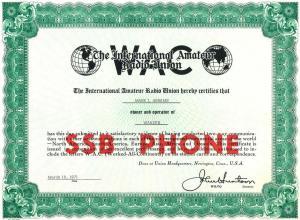 In the late 1990s, Kenwood started to emerge as a force in the two-way radio market. They developed product that was of questionable quality and reliability, but they quickly learned and improved their products. Raycom became a Kenwood dealer and sold their LTR products on our UHF LTR systems. Even though many traditional two-way radio customers had switched to Nextel and cellular systems, there remained a strong contingent of customers who desired traditional two-way radio. However, the appeal of a network instead of individual tower sites was increasing since it provided for an enhanced user experience, reduced training for the personnel using the radios and increased coverage beyond what could be achieved with traditional radio systems.
In the late 1990s, Kenwood started to emerge as a force in the two-way radio market. They developed product that was of questionable quality and reliability, but they quickly learned and improved their products. Raycom became a Kenwood dealer and sold their LTR products on our UHF LTR systems. Even though many traditional two-way radio customers had switched to Nextel and cellular systems, there remained a strong contingent of customers who desired traditional two-way radio. However, the appeal of a network instead of individual tower sites was increasing since it provided for an enhanced user experience, reduced training for the personnel using the radios and increased coverage beyond what could be achieved with traditional radio systems.
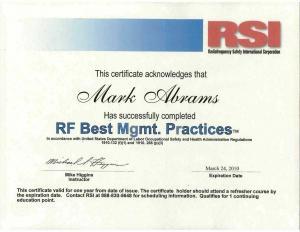 In 2008, Kenwood and ICOM jointly developed their NXDN 6.25KHz technology which allowed the system operator to double the number of talk paths from narrowband 12.5KHz operation or quadruple the talk paths compared to the existing wideband 25KHz channel operations which was scheduled to convert to narrowband by Jan 2013. Kenwood developed their radio network that used IP to connect tower sites, thus paving the way to an economical method of connecting tower sites together. (There were some older network designs that relied on more expensive T1 technology from the telephone company or used microwave links, but the cost of this technology prohibited widespread deployment of these older analog technologies that did not have the benefits of the newer digital technology that is the basis of our NEXEDGE system.) The Kenwood NEXEDGE radios proved to be extremely reliable (about 0.1% warranty failure rate), had tons of advanced features and sold for a considerably lower price than the MotoTrbo system by Motorola that attempted to compete with Kenwood’s NEXEDGE system. Historically, Motorola was always the first to develop almost anything in two-way radio, but this time, Kenwood was ahead of Motorola in system development, equipment delivery and features. Now, Raycom is operating the 2nd Generation NEXEDGE equipment with hundreds of advanced features.
In 2008, Kenwood and ICOM jointly developed their NXDN 6.25KHz technology which allowed the system operator to double the number of talk paths from narrowband 12.5KHz operation or quadruple the talk paths compared to the existing wideband 25KHz channel operations which was scheduled to convert to narrowband by Jan 2013. Kenwood developed their radio network that used IP to connect tower sites, thus paving the way to an economical method of connecting tower sites together. (There were some older network designs that relied on more expensive T1 technology from the telephone company or used microwave links, but the cost of this technology prohibited widespread deployment of these older analog technologies that did not have the benefits of the newer digital technology that is the basis of our NEXEDGE system.) The Kenwood NEXEDGE radios proved to be extremely reliable (about 0.1% warranty failure rate), had tons of advanced features and sold for a considerably lower price than the MotoTrbo system by Motorola that attempted to compete with Kenwood’s NEXEDGE system. Historically, Motorola was always the first to develop almost anything in two-way radio, but this time, Kenwood was ahead of Motorola in system development, equipment delivery and features. Now, Raycom is operating the 2nd Generation NEXEDGE equipment with hundreds of advanced features.
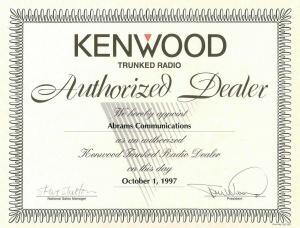 Historically, Motorola has always been at the forefront of radio technology. Their products are generally designed well, manufactured for reliability & durability and first to market. I have generally admired the Motorola product, but we have never been able to get along with Motorola management. Motorola demands unquestioned loyalty to their company and products to the exclusion of everyone else.
Historically, Motorola has always been at the forefront of radio technology. Their products are generally designed well, manufactured for reliability & durability and first to market. I have generally admired the Motorola product, but we have never been able to get along with Motorola management. Motorola demands unquestioned loyalty to their company and products to the exclusion of everyone else.
Raycom has always been about delivering reliable communications at an affordable price. Motorola will often develop a new technology well ahead of others and incorporate that technology into the radios that they sell to the customers without informing them that they were purchasing a Motorola proprietary product that no one else can supply. With that in mind, Motorola has been about being the highest priced product and locking the customer into their product so that they can charge the customer their high prices because the customer is helpless to resist without completely discarding their existing investment in radios. There is a simple saying about Motorola that is advanced by non Motorola dealers, “You can buy better, but you can’t pay more!” This philosophy has always been foreign to Raycom as we treat every customer with respect and attempt to earn their business with every transaction, so we do not normally sell Motorola radios unless we get a specific request for Motorola. However, our service department can provide expert service for Motorola radios, Kenwood radios and many other brands.
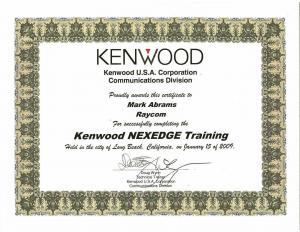 On the other hand, Kenwood is now the 2nd largest manufacturer of two-way radio. They also manufacture many products for car electronics, high end audio products, amateur radio equipment, medical imaging displays, professional video equipment for the entertainment industry, 4K projectors, emergency broadcast systems, music & entertainment software and security products. It has merged with JVC to become JVCKenwood and has been in acquisition mode for years. Kenwood purchased Zetron, a respected manufacturer of tone and signaling systems and dispatch consoles. Since then, Kenwood has purchased EF Johnson Technologies and has integrated that product line into the Kenwood offerings. Recently, they purchased Kairos, a European manufacturer of specialized radio systems.
On the other hand, Kenwood is now the 2nd largest manufacturer of two-way radio. They also manufacture many products for car electronics, high end audio products, amateur radio equipment, medical imaging displays, professional video equipment for the entertainment industry, 4K projectors, emergency broadcast systems, music & entertainment software and security products. It has merged with JVC to become JVCKenwood and has been in acquisition mode for years. Kenwood purchased Zetron, a respected manufacturer of tone and signaling systems and dispatch consoles. Since then, Kenwood has purchased EF Johnson Technologies and has integrated that product line into the Kenwood offerings. Recently, they purchased Kairos, a European manufacturer of specialized radio systems.
Today, MRA owns and operates the largest and most advanced NEXEDGE radio network in the nation, the digital product manufactured by JVCKenwood. We have more sites, more coverage and greater capacity than any other company in the Los Angeles (LA) area and Southern California. Our Kenwood NEXEDGE network is second to none and has the features and coverage to satisfy the most discriminating user. Therefore, we emphatically state that this is “Not Your Father’s Two-Way Radio!” MRA’s sole competitor that operates a Motorola MotoTrbo system has ¼ of the channels and ½ of the sites in the Los Angeles (L.A.) area and Southern California that MRA operates. Our system offers superior performance and in direct comparison, has never failed to provide the beneficial edge over our competitor.
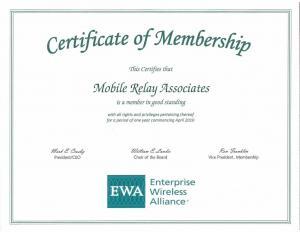 MRA is a member of EWA, a national recognized frequency coordinator that processes over 40% of all the FCC license applications in the land mobile radio business. Mark Abrams has been a member of the EWA board of directors ever since its inception when ITA (Industrial Telecommunications Association which was the predecessor of EWA) merged with AMTA (American Mobile Telecommunications Association), another frequency coordinating committee (I was on the AMTA board of directors prior to the merger) to form EWA. This places MRA in the position of knowing the newest, latest and greatest information about the industry, the FCC proposed regulations and opportunities for our customers.
MRA is a member of EWA, a national recognized frequency coordinator that processes over 40% of all the FCC license applications in the land mobile radio business. Mark Abrams has been a member of the EWA board of directors ever since its inception when ITA (Industrial Telecommunications Association which was the predecessor of EWA) merged with AMTA (American Mobile Telecommunications Association), another frequency coordinating committee (I was on the AMTA board of directors prior to the merger) to form EWA. This places MRA in the position of knowing the newest, latest and greatest information about the industry, the FCC proposed regulations and opportunities for our customers.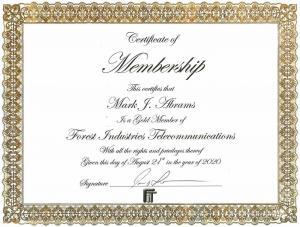
Welcome to the world of MRA. We appreciate your business and strive to earn your business over and over again. Our goal is to never let our customers down and to provide reliable communications, especially when it is needed the most. Our systems have never been down during an emergency which cannot be claimed by most of our competition. That is the reason we use the motto, “When Your Communications are Essential!” We go the 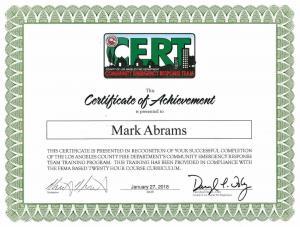 extra mile in designing and installing our systems so that our customers experience the best in radio communications, that our systems are more reliable than our competitors and that we have the fewest outages. We will continue to strive for excellence in all that we do for our customers.
extra mile in designing and installing our systems so that our customers experience the best in radio communications, that our systems are more reliable than our competitors and that we have the fewest outages. We will continue to strive for excellence in all that we do for our customers.
Mark J. Abrams, Owner
